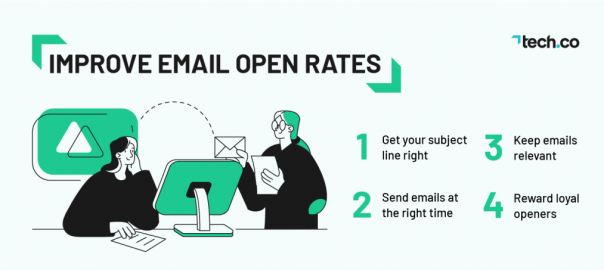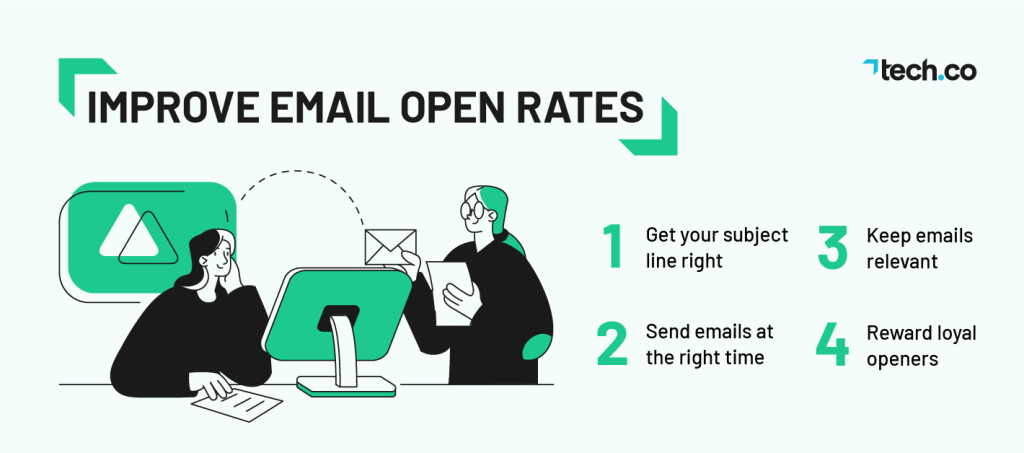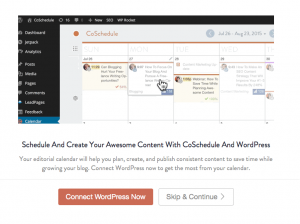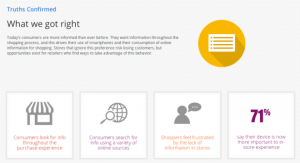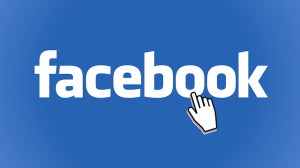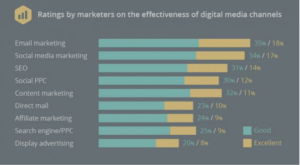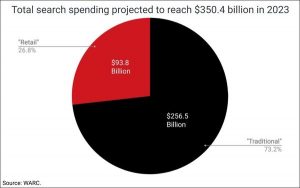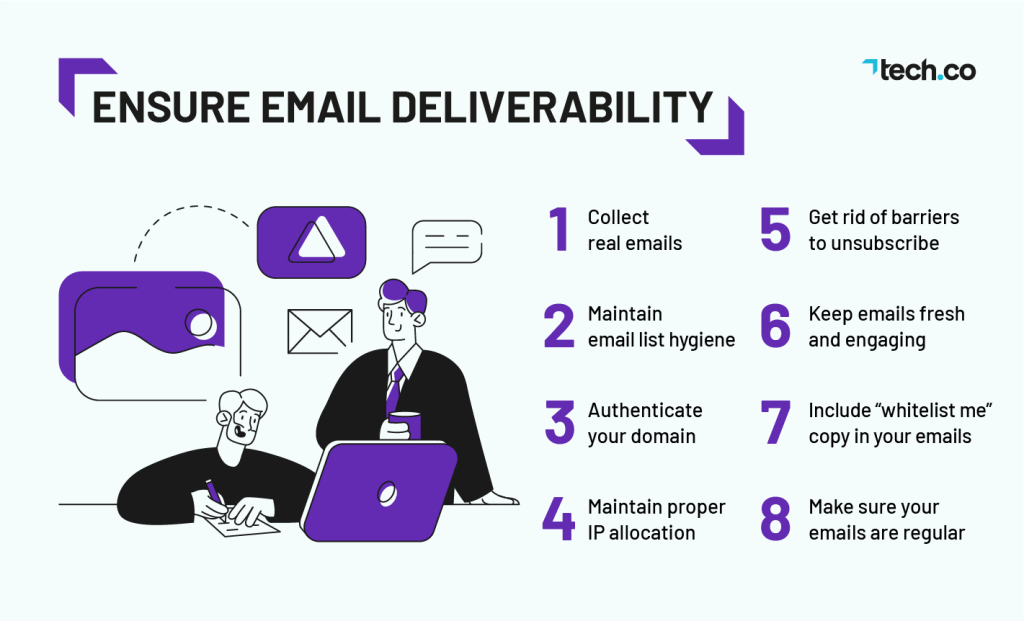 Create a winning email marketing strategy to enjoy the best ROI of any marketing strategy. Yet, email marketing involves a complex web of actions, from attracting subscribers to maintaining a connection that reduces churn to deliver profits. Today, we’ll break down this complexity to deliver optimal results from your email marketing strategy.
Create a winning email marketing strategy to enjoy the best ROI of any marketing strategy. Yet, email marketing involves a complex web of actions, from attracting subscribers to maintaining a connection that reduces churn to deliver profits. Today, we’ll break down this complexity to deliver optimal results from your email marketing strategy.
Create a winning email marketing strategy
Why you need email marketing
Email marketing delivers great ROI, an average of $ 42 for every dollar spent on this strategy, making email marketing a MUST for businesses regardless of market, product, or price range. Email marketing, done right, provides a means to build loyalty among your customers, encourage purchases, and nurture leads leading to new customers.
According to Hubspot, for 2020:
- 73% of millennials prefer email communication from businesses
- 78% of marketers saw increased email engagement over the last 12 months
- 80% of marketers say email marketing improves retention
- 59% of respondents say email informs their purchase decisions
- 31% of marketers say email is the best way to nurture leads
Yet, many businesses either don’t bother with email marketing or don’t get the full value from their email marketing efforts.
If you’re one of those businesses who aren’t using email or don’t feel you’re doing as much as you can with your email marketing strategy, read on to learn how to create a winning email marketing strategy to rock your business.
Elements of winning email marketing
Let’s start at the beginning.

1. Collect subscribers
In the bad old days, we bought subscriber lists and I cut my teeth in my agency by being the best at list buying by delivering the highest ROI. Those days are long gone due to GDPR (since 2018 in the EU), CASL (since 2016 in Canada), and Can-Spam (in the US) [source]. While these regulations differ somewhat, all make buying or sharing lists for email marketing illegal (with rather high fines for violations), although you can still send snail mail to purchased lists.
Hence, you must generate subscriber lists yourself. And, you don’t want just anyone on your list. You want subscribers who are prospects for buying or customers who already made a purchase. You can add anyone to your list as long as they agree to receive communications from you or have done business with your business. This includes:
- customers
- website visitors who register
- attendees at online or physical events
- those who subscribe on your website
2. Attract subscribers
The most common tool used to attract subscribers is a lead magnet.
A lead magnet is anything your target audience might find valuable, be it an ebook, a video, a trial version of your product, a free or discounted product, or anything else of value.
Most email providers offer easy delivery of your lead magnet through a welcome email or you might provide immediate access to your lead magnet once subscribers enter their email by using a plugin that sequesters some content behind a paywall.
Exit-intent popups are also a great way to collect subscribers as up to 80% of website visitors leave without signing up for your newsletter. Just ensure you don’t piss off visitors by showing your popup too early or blocking valuable content from visitors in your efforts to gain subscribers as this backfires in terms of lowering chances the visitor will subscribe and lowering their evaluation of your brand.
3. Email types
You likely want several types of email as part of your comprehensive email marketing strategy. For instance, you need a welcome email designed to go out immediately after a subscriber signs up. This email message might contain your lead magnet.
You also want regular broadcast emails that go out on a schedule to subscribers. Some brands find sending a few emails a week work well while other brands find too much churn when they send out emails that frequently and send once a week or even once a month. Experiment to determine the optimal frequency for sending emails, monitoring performance to ensure good engagement without a lot of churn. We call these relational emails designed to maintain a positive relationship with subscribers.
You might have transactional emails, as well. These emails make offers to stimulate immediate purchase. Transactional emails might contain discount codes or offers from partners.
Also, consider sending a final email when a subscriber unsubscribes, called list churn, to leave one last good impression, gain insights into why subscribers decided to leave, and offer the opportunity to return as a new subscriber.
4. Relational emails
The goal of relational emails is to provide valuable content to subscribers that moves the needle to encourage purchases. In marketing parlance, we talk about this type of activity as lead nurturing designed to take subscribers from awareness of your brand to purchase by informing and building positive attitudes toward your brand.
Check out the image below. This shows that consumers (either end consumers or business buyers) go through a series of steps before making a purchase. This involves cognitive and affective (emotional) changes in their hearts and minds that help them make a purchase decision.
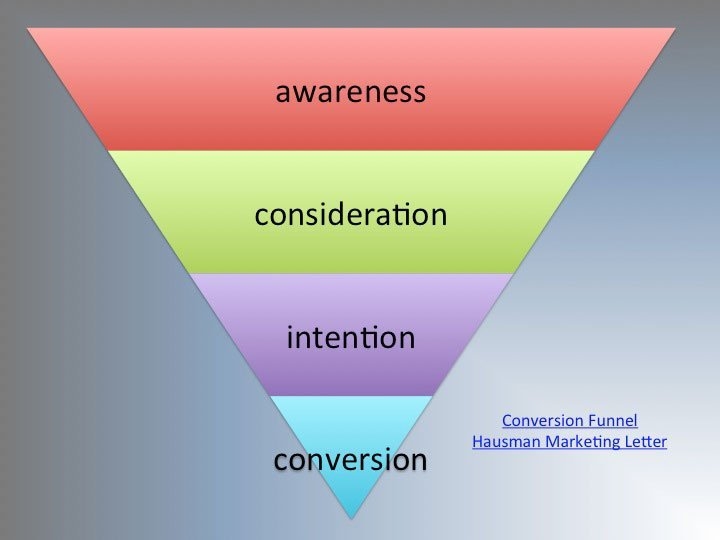
But, the image doesn’t accurately represent the true marketing funnel that turns customers into repeat customers and, ultimately, loyal customers who won’t switch to your competition when they introduce the next shiny object.
Use this information when constructing your relational emails.
5. Segment your list
Building on the notion of the marketing funnel, segment your list and adjust your email content to match that segment. Plus, personalization really matters in terms of results and the deeper the level of personalization, the better the results. Examples of elements to include in your segments are:
- Stage in the customer journey. Subscribers early in the journey need general information that builds an understanding of your advantages over the competition, while subscribers who’ve already purchased once need a reminder to make another purchase. And, similar changes are required for subscribers at other stages in the journey.
- The product the segment wants. Focusing on the specific benefits of a specific product drives much better returns.
- Where the subscriber came from. Again, personalization matters. Hence, you may not adjust your content based on whether a subscriber joined from one lead magnet versus another or one event versus another, but mentioning it in the content really helps the subscriber feel wanted.
6. Improve open rates
Improving open rates is critical for creating a winning email marketing campaign since subscribers can’t click if they don’t open your email. Remember that subscribers get a bunch of emails every day and may overlook yours without some effort to improve open rates. Email providers recently started segregating email into promotion tabs away from the main tab for messages and no one goes to their promotion tab so they won’t see your message. Ask subscribers to whitelist your email address in every email as whitelisted addresses don’t end up in the promotion tab.
Next, ensure you send email messages at the right time. The best time to send your message is between 9 am and 3 pm local time. Test your own best time to send by experimenting with different times both within this time period and outside to ensure you send at the right time to optimize opens.
7. Subject lines
Create a great first impression for your email with a meaningful (to subscribers) subject line. Know that 47% of subscribers in one study made a decision to open an email message based solely on the subject line. Use subject lines that pique curiosity or are funny or make readers afraid not to open the email because they’ll miss out on something (FOMO) or retargeting subject lines for visitors who left without making a purchase. Personalize the subject line with the person’s name and one study found using emojis in your subject line improved open rates.
8. Improve CTR
Click-through rate or CTR is really the primary metric to track the performance of your email marketing campaigns. Create a winning email marketing strategy by understanding which CTA (calls to action) generate the highest CTR. Also, experiment with different CTA buttons, placement, and sizes to optimize performance.
9. Reducing churn
You worked hard to gain subscribers so don’t let them leave your list. Sometimes subscribers just don’t need your emails anymore, but, more likely, you aren’t giving them valuable information.
Consider the car shopper who buys a car. He/she doesn’t want your emails again until considering the next purchase in 4-5 years. So, transform your email content based on their purchase. Provide email at intervals when regular maintenance is likely needed and include coupons for recommended maintenance items. Or, provide content on protecting the investment or using new features of the automobile. Being tone-deaf to the way customer needs change over time not only increases churn it lowers the attitudes toward your brand. For instance, I often get remarketing emails from companies even after I bought the product — from them. That sends a clear message that I’m not worth their time and I’m just another email on their list.
10. Cull your list
This sounds nonsensical given our discussion on churn above, but you periodically need to go through your list and cull out subscribers who don’t engage with your messages. Keeping subscribers who never open your email messages isn’t the way to create a winning email marketing strategy and may hurt you.
First, filling your list with subscribers who never open your messages drags down the quality of your list to make it more likely your messages end up on a user’s junk folder, another place where no one ever looks for messages. Also, since most providers charge based on the size of your list, retaining subscribers who represent 0 value to your organization costs money. Finally, recognize you lose nothing by removing subscribers who don’t engage with your brand as they have no value.
Most providers track opens and clicks by subscriber, allowing you to easily remove those who don’t engage with you.
Conclusion
As you see, email marketing involves a number of moving parts. But, getting them right results in a winning email marketing strategy resulting in a high return on investment and, potentially, tremendous profits.
Digital & Social Articles on Business 2 Community
(23)
